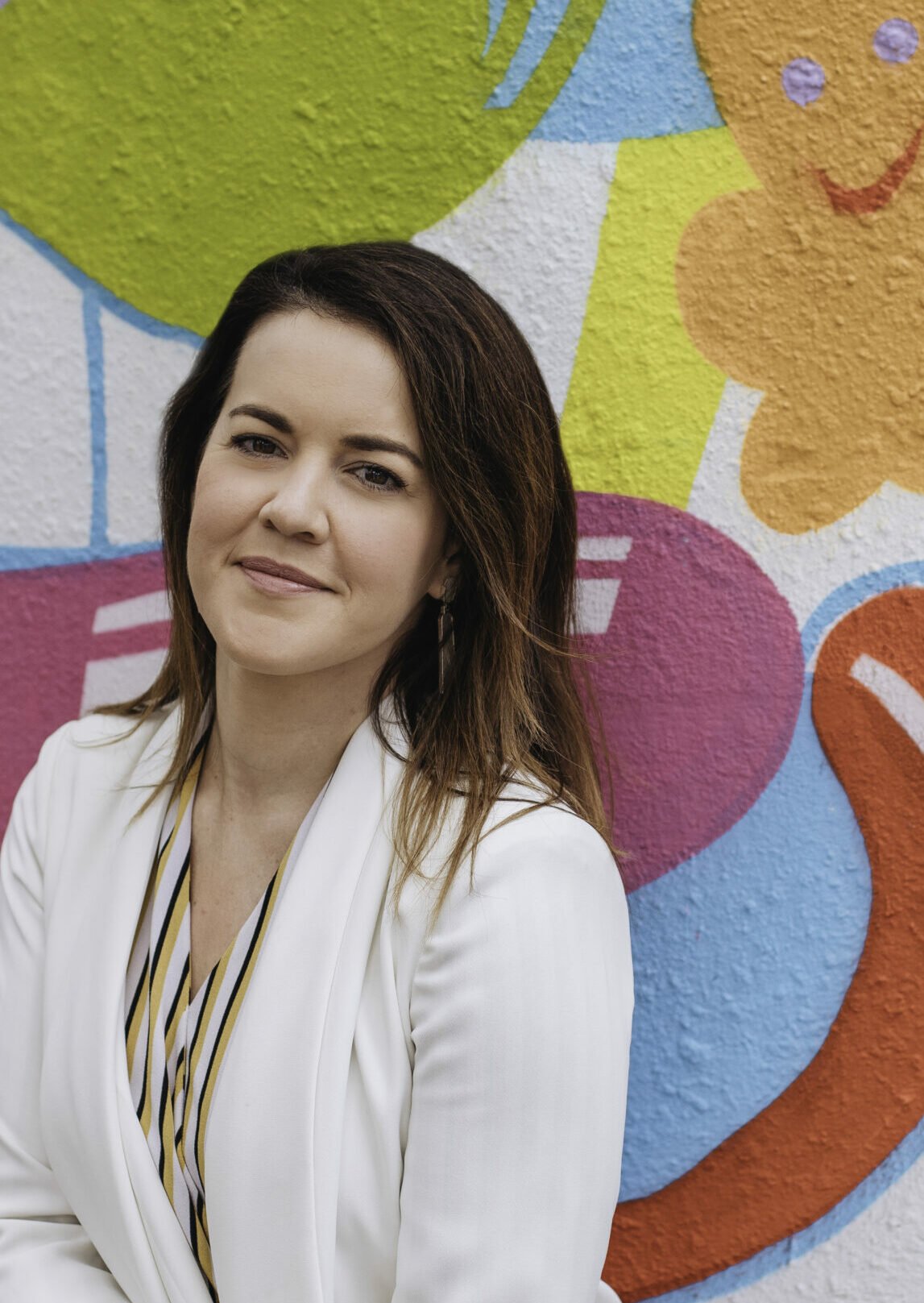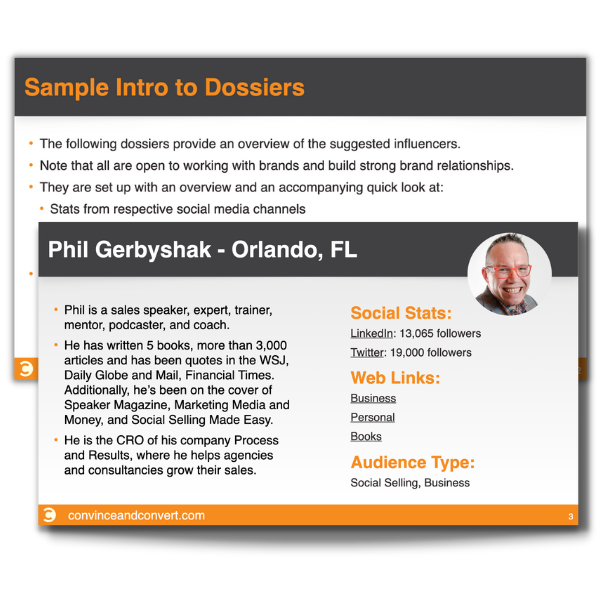Not so long ago, influencer marketing was a “nice to have.” It was new, exciting, kind of confusing, and a bit of a wild, wild west. A shiny new, but still fringe, marketing tactic.
You may have dabbled in working with creators if/when you had some leftover fiscal year funds. Perhaps you experimented with an affiliate program with mixed results. Maybe, like many other marketers, you were inconsistent or simply “stuck a pin” in your influencer marketing campaign efforts while turning your attention to paid or traditional marketing tactics…
Nowadays, influencer marketing is no longer a “nice to have.” It has become a “must have.” Today, commissioning creator content is table stakes for successful brand and content marketing teams. And the benefits of influencer marketing—and subsequent purchasing power—will only continue to grow for years to come.
In a recent poll by HubSpot, when asked if consumers have purchased a product based on an influencer’s recommendation in the last three months, 18% of Gen Z confirmed they’d been swayed by online creators.
That number jumped to 26% for Millennials and up to 33% for Gen Z.
How Each Generation Shops in 2023 [New Data from Our State of Consumer Trends Report] – HubSpot
So, now what? If you’ve been out of the influencer marketing game for a while and are looking to start or grow your influencer marketing programs, you may be asking yourself where to start.
I started working with creators back during my time at Disney Parks & Resorts, setting up some of the very first influencer marketing programs and social media creator networks for Walt Disney World, Disneyland, Disney Cruise Line, the Resort hotels, and any/everything in between. And over the past 10+ years, I’ve launched many other brands’ first-ever influencer marketing programs with lots of learnings gathered along the way. (Sometimes by learning what not to do the hard way…😅)
The following are a few influencer marketing tips for setting your organization up for success in this space, taking lessons learned from Disney marketing and beyond.
Seven Tips for Starting or Growing Your Influencer Marketing Programs
According to Meltwater, 82% of consumers trust the opinions they see on social media channels and use them to drive purchasing decisions. And that trust is translating into strong returns for businesses, “generating $6.50 in revenue for each $1 spent.” The benefits of influencer marketing are both tangible and vast.
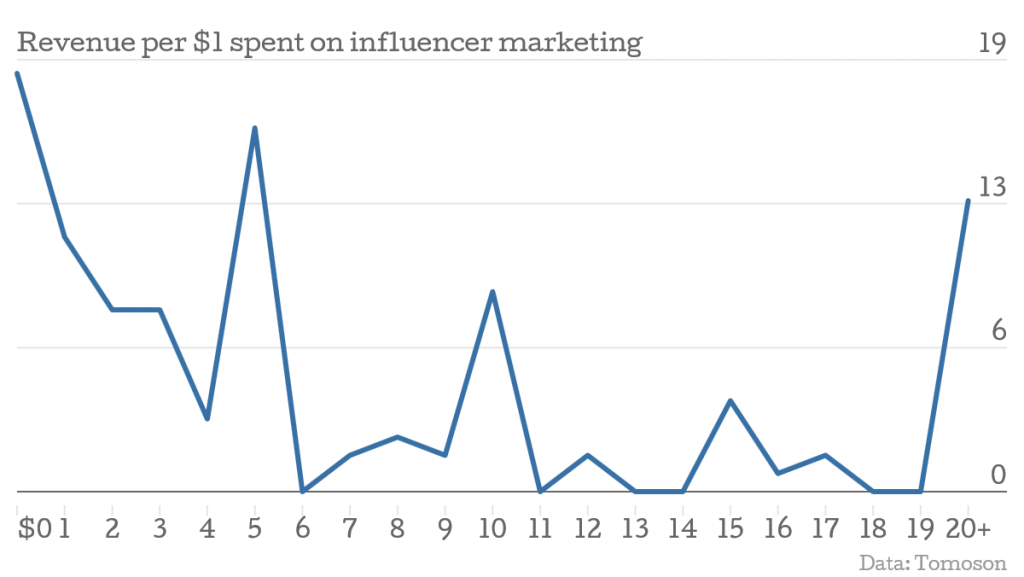
And we’ve all been there personally, right? Whether you’ve been influenced to buy a certain outfit, skincare product, or even a car, influencers drive brand advocacy and product awareness via relatable and credible storytelling. Here are some influencer marketing tips for harnessing that authentic – albeit properly disclosed – sponsored content for your marketing organization.
82% of consumers trust the opinions they see on social media channels. Click To Tweet1) Evaluate Your Influencer Marketing Readiness
Before you dive into the great big world of influencer marketing campaigns, take a step back and assess your organization. While influencer efforts can be precisely tracked, it takes some preparation and cross-departmental coordination to get things like unique promo codes, trackable UTM links, and legal agreement templates set up.
Beyond tracking, you should intimately know your key target audiences and insights before you do any sort of creator outreach. After all, how can you possibly know who to create a brand partnership with if you’re not yet sure whose ears and eyeballs you’re looking to reach?
I’ve created a downloadable 12-point Influencer Marketing Readiness Checklist to assist you with this step. (If you find it confusing or challenging to fill out, contact our Convince & Convert team for additional support. We’d be happy to help you kick-off your influencer marketing strategy!)
2) Start Small When Identifying Potential Influencer Marketing Partners
It’s easy to get excited about working with creators with millions of followers. However, you’re much more likely to get the most bang for your buck by partnering with multiple influencers with smaller accounts.
Why? Oftentimes, nano/micro-influencers have higher engagement rates (and may have more passion, free time, and capacity for nailing brand deals and responding to follower comments and questions.)
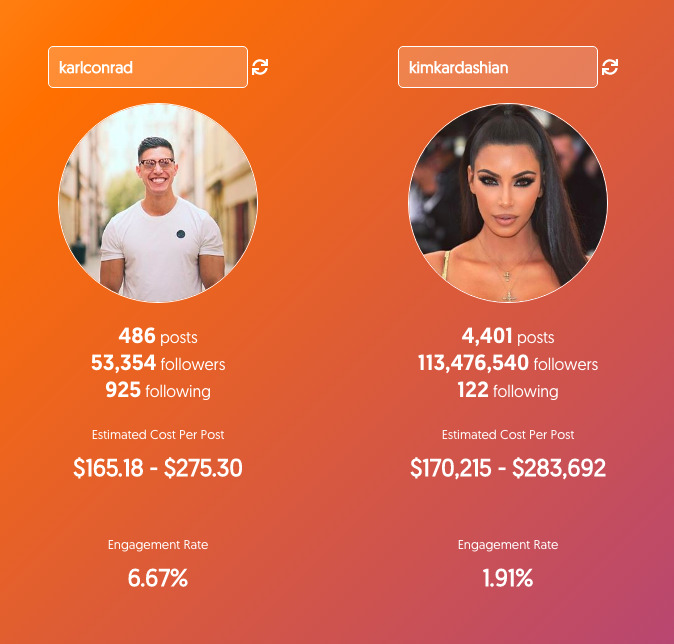
Example: Kim Kardashian has over 342 million followers, but her engagement rate is less than 2%. Niche accounts have upwards of 4-8% engagement rates, so don’t discount smaller accounts when you’re starting out. While macro/mega-influencers can make incredible sponsored assets, look primarily for “quality over quantity” and brand relevancy.
Don't discount nano/micro-influencers when you’re starting out with influencer marketing. Click To Tweet3) Don’t Ignore Your Existing Fans When Searching for Brand Advocates
The number one question I’m asked by clients and brands is, “Where do I start? How do I know who to partner with and how to reach out to them?”
My answer is always, “Start with your fans.”
Your loyal customers know you. They know your product. Scratch that, they love your product. They’re built-in advocates who are likely already posting about you.
So, mine your tagged photos. Take a look at your hashtags and direct messages. Ask your Customer Service or Guest Relations partners for testimonials or positive kudos they may have received and saved. Make a list of happy customers and see who has a flare for photography or which ones might be camera-ready and tech savvy. See if they’ll spread the word about their positive experiences on your behalf.
Are you already engaging in permissioning and reposting user-generated content? UGC is a great gateway to influencer marketing. Why? You can take it one step further. Instead of reacting to content, go back to your UGC contacts, review their accounts, and consider proactively asking them to create influencer content for you.
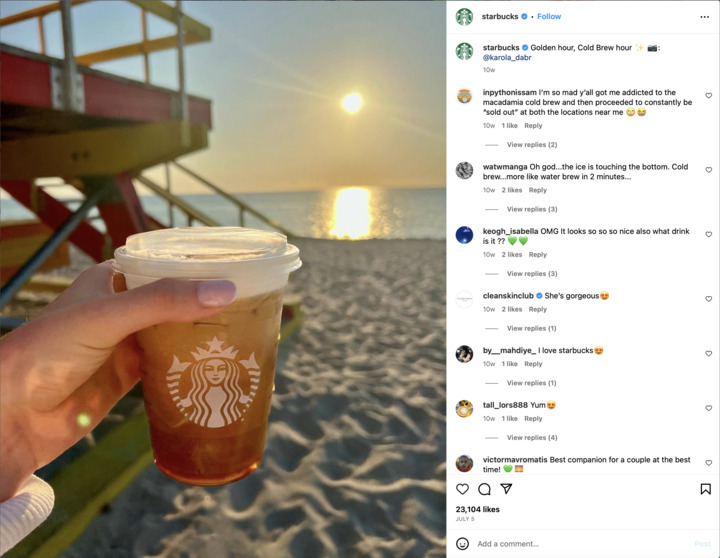
Example: Starbucks featured this beautiful sunrise photo of iced coffee at the beach from one of their fans. They likely gained permission to repost it before sharing it to their account.
Should they have a new cold brew product launching soon, their marketing team could easily go back to this fan and ask her to take another gorgeous, beachy image of the new cold brew as one of many creators recruited to help support that go-to market effort. Boom, easy.
4) Establish Influencer Marketing Campaign Goals and Enable Tracking
Fast-forward to your flashy new influencer marketing posts going live. They’re driving interest! They’re garnering incredible reach! New audiences are suddenly interested in your products! You’ve worked so hard and it’s paying off!
And…you’ve got absolutely no idea how many website visits or conversions can be attributed to your creator’s efforts because you didn’t put tracking mechanisms in place. And you’ve got no idea if what you’re seeing and getting is “good” because you didn’t set KPIs before going live.
Womp, womp.
This is what not to do.
If you don’t have a way to track the success of your influencer marketing campaigns, don’t launch them yet. While the benefits of influencer marketing are a-plenty, it does take time and effort to do it right.
Don’t get yourself into a situation in which you can’t prove the value of your influencer marketing campaigns or answer ROI questions because you skipped your benchmarking and tracking steps. You likely won’t get funds to work with more creators if you can only guess as to how they’re performing.
Get the promo codes. Set up the UTMs. Work with your Finance, Legal, Operations, and Web teams to track as much as possible. Your future self will thank you.
Pro Tip: Measure awareness, engagement, and conversions when setting your influencer marketing strategy and KPIs. Creators can truly drive top, middle and bottom of funnel results, so only focusing on engagement or solely reporting on conversion results can be short-sighted.
5) Always Personally Vet Your Influencer Partners
There are many great tools, platforms and agencies out there. If you’ve got the budget to do so, enlisting help in identifying, evaluating, outreaching, and executing with influencers can take a huge load off your teams and get you into the market faster. But…
Do. Not. Go. Live. Without. Personally. Vetting. Your. Influencer. Partners. (Did you hear me? Folks in the back, are you with me?)
It’s tempting to cross a program off your list, move onto your next To-Do item, and to let automated systems take care of some of your influencer marketing steps. But not looking at who you’re partnering with is one of the biggest mistakes you can make.
This doesn’t have to be time consuming. I used to tell my teams to take 5-6 scrolls back through a creator’s content. A few dozen grid views can tell you a lot.
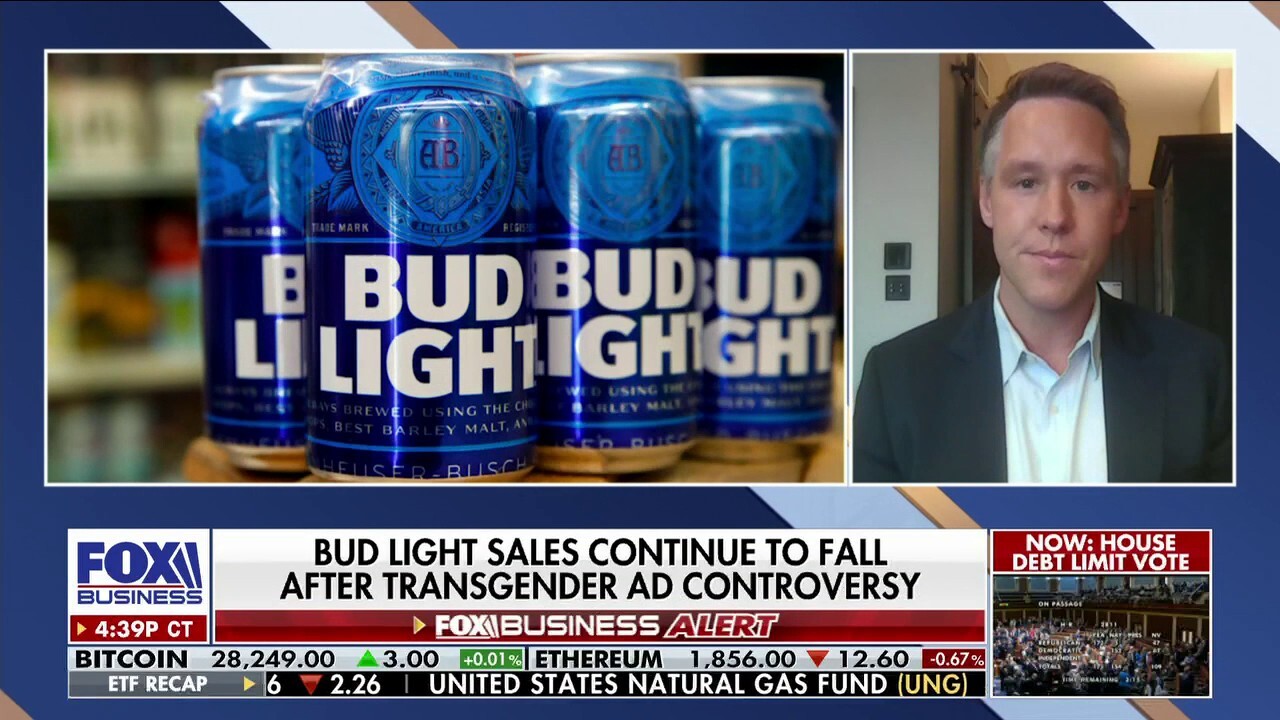
Example: Have you been following the Bud Light boycott? While I could be wrong, I’d bet money that someone on their team didn’t take a close look at their March Madness creators. Or maybe they did…but they grossly underestimated, or were overly optimistic, about the (unfortunate) reaction their audience would have to the influencers they selected.
Always, always, always personally vet your partners and get leadership alignment. You should be choosing creators you’d stand by and support if/when backlash occurs. This is the opposite—sadly—of what Bud Light did for Dylan Mulvaney. And the drastic drop in sales and the employee layoffs that followed will likely be in case studies and marketing textbooks for years to come.
6) Let Your Creators Do What They Do Best
This one is a biggy. It should count for one more than just one tip because it’s that important.
The reasons your influencer partners have followers include their unique content style and overall personality, lifestyle, and area of focus. Consumers can smell an ad through their computer screens, especially Millennials and Gen Z’ers, so resist the urge to micro-manage and prescribe when working with creators. Instead, give them the “must have messaging” and some Do’s and Don’ts.
Make your critical parameters crystal clear and then…get out of the way. You’ll have to commit to having less control in the executions than with, say, an advertising agency partner or production vendor. But that’s the beauty (and the point) of working with influencers, i.e. using their influence to get your product out to their followers in a way that’s best suited to their fans.
As long as you’ve been upfront and thorough on what NOT to say and disclosure / promo code details, don’t be a backseat driver and let them be them.
Pro Tip: Your input should be no longer than a one-sheeter, two at max. (Exceptions to this may include long-term ambassador programs or complex regulatory products.)
Use bullet points, bold the most important parts, and take a “less is more” approach. Your creators do not need the full history of your entire company and brand guidebook. They just need “just enough” to nail their content for your immediate campaign.
7) Disclose, Disclose, Disclose…
Do not, I repeat, do not try to make your sponsored content seem organic. Not only is this an FTC violation, it’s the opposite of authentic, trustworthy, credible advocacy. (AKA all the things you’re going for by working with influencers.)
Don’t bury your disclosure or #ad in a myriad of other hashtags. Don’t make it illegible or hidden.
Followers should clearly see that this is a #sponsored post. Today’s consumers are used to influencer marketing by now. Don’t muck it up by pretending like you don’t have an agreement and compensation exchange.
Pro Tip: Include a clause in your agreement that ensures you’ve got the right to ask your influencer partner to edit or remove/replace incorrect posts. You don’t want to get into a sticky situation in which your disclosure wasn’t clear or correct, but without any sort of recourse. If/when in doubt, require reviews and approvals prior to posts going live.
Are You Ready to Set Your Influencer Marketing Strategy?
There are sooooo many other factors and tips to share about influencer marketing. This is truly just the tip of the iceberg. (Can you tell I’m super passionate about this topic?!)
Start by filling out my Influencer Readiness Checklist, putting together a creator short-list, and following the tips above to begin your creator marketing journey! While Influencer marketing can be somewhat of a wild ride and can differ with each and every partnership, the benefits you’ll reap are well worth it all.
Did we miss a tip? Want to share a success story? Contact us today and stay connected with us on LinkedIn.
